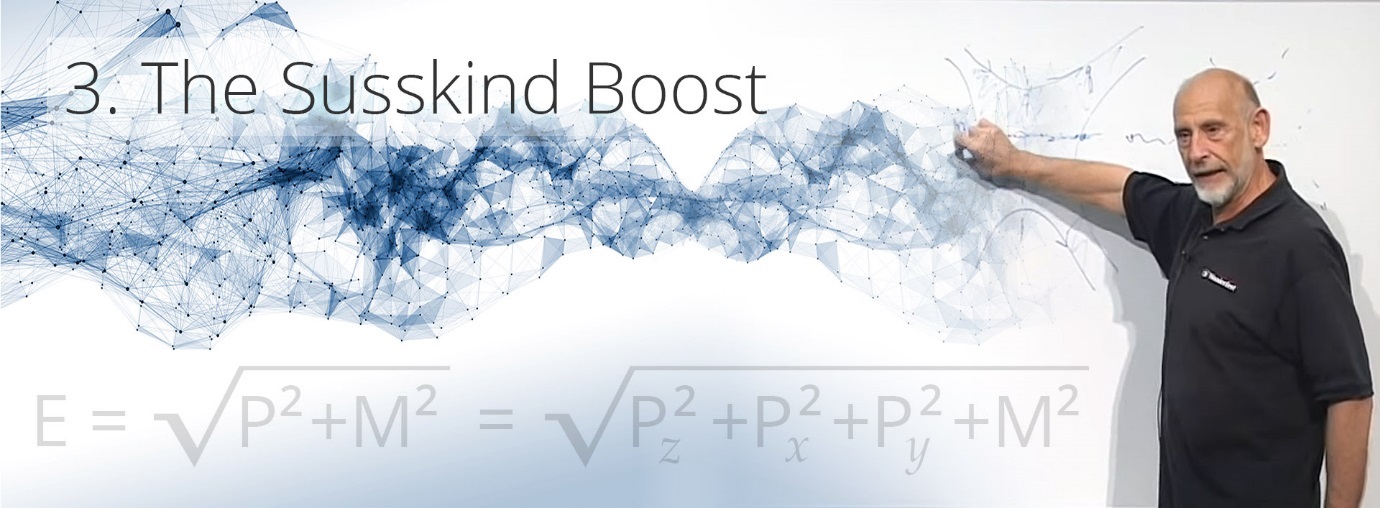The Susskind Boost (Super Summary)
System 3. The Susskind Boost
Influencers: Leonard Susskind – Amanda Peet
# String Theory / Business / Software

Above we see Professor Leonard Susskind, arguably the first-string theorist, and an equation for boosting strings taken from his Stanford University video ‘Lecture 1. String Theory and M-Theory. In which at 34 minutes Susskind tells us:
‘We boost the hell out of the system along the Z axis, (gross profit) until every single particle (company) has a huge momentum, if there is any particle that is going backwards along the Z access, you just have not boosted it enough. Just boost it more until it’s going forward with a large momentum.’
To apply this to the network we change a particle for a company, and the Z axis to gross profit.
On hearing the line above, it immediately solved a dilemma, which was what to do with an underperforming company. I was not sure if it was better to apply more marketing or weather to offer financial assistance. It is in my nature to apply more marketing but was that best?
The Susskind Boost tells us that in string theory one should apply boost, so boosting it was be it marketing, the award of a tender, additional websites or any other form of boost. This lead to packaging all the possible ways one could boost a company into one equation/algorithm that I called The Susskind Boost, that would be applied to all companies.

In which the Ḡ is gross profit and ₰ is the TFBM software. After which we add boosting methods, for example Ť is tenders or agency contracts. After which we divide the result the limiters ϻ for market share and ⌂ for access to stock.
As or even more importantly Professor Susskind tells us that systems that are small are harder to boost and within change occurs very slowly. This is like most businesses, and so Villa Secrets changed the shape of the GGW string to apply maximum boost to new companies. Specifically, all the 25% of gross profit contribution for the first two or three years would be spent directly boosting the company that provided the contribution. This is equivalent of a franchisor spending its 4% or 5% of turnover (not gross profit) fee on marketing the franchisee.











Leave a Reply
Want to join the discussion?Feel free to contribute!